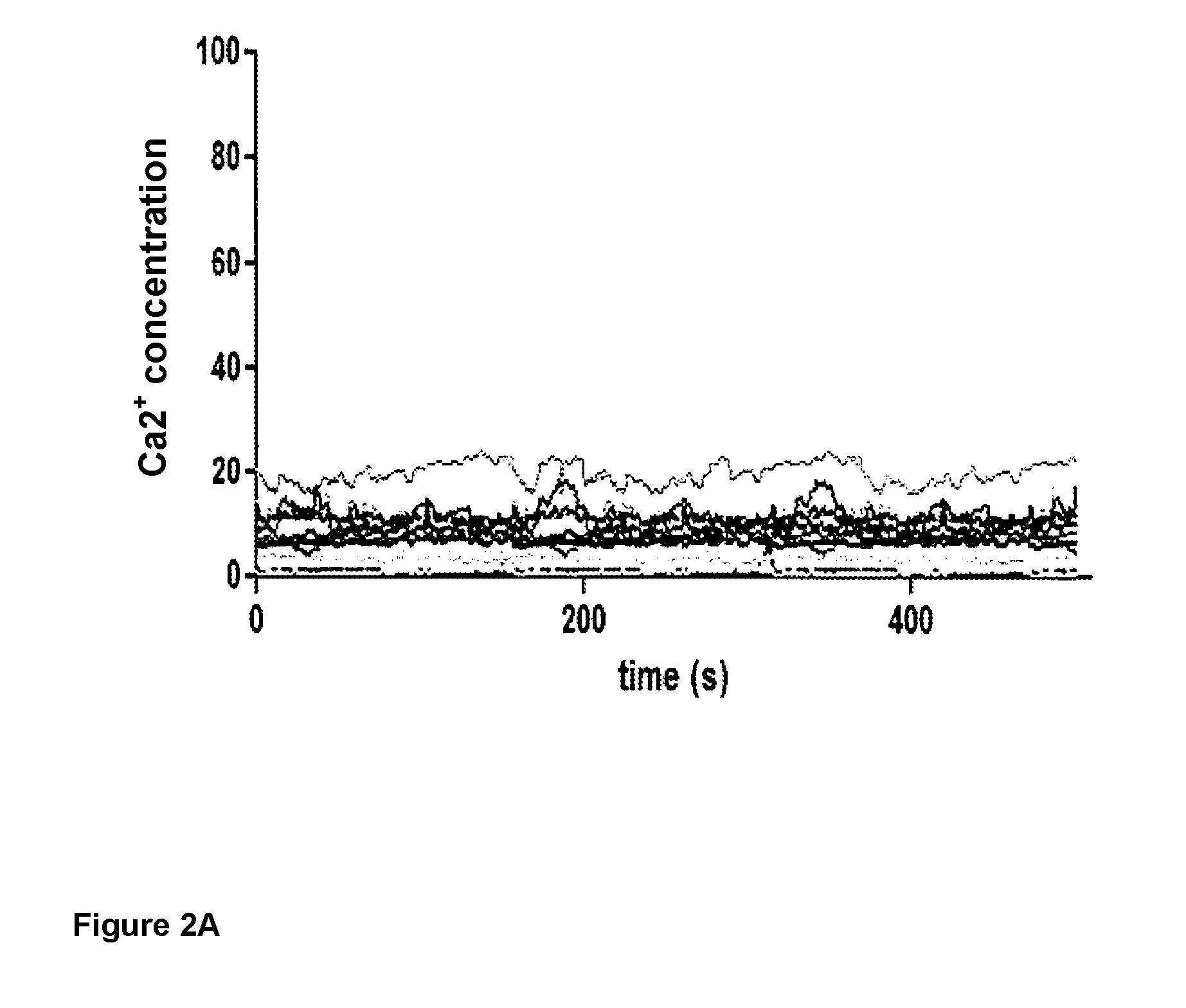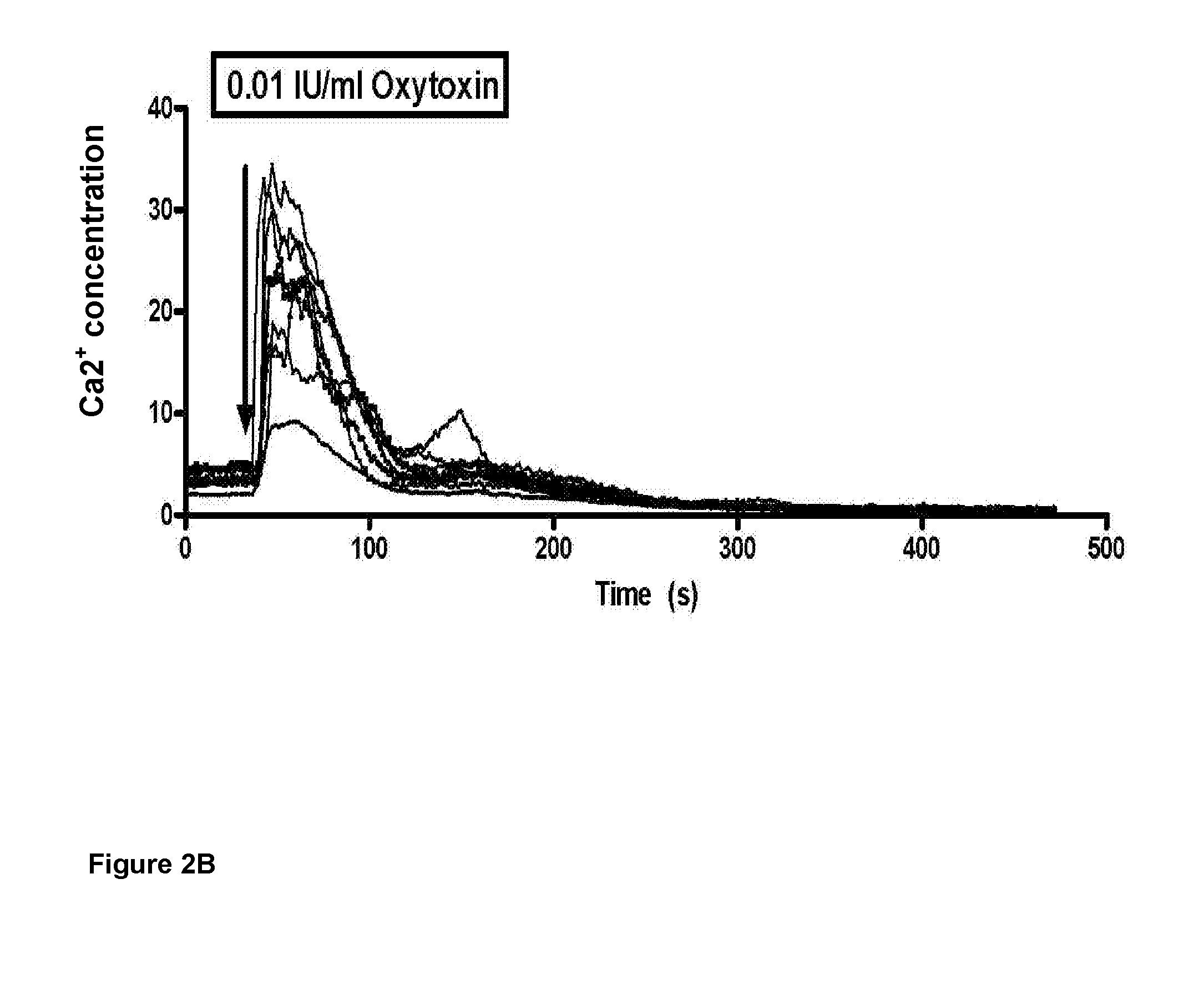Method for treatment of labor arrest
a labor arrest and treatment method technology, applied in the field of labor arrest treatment, can solve the problems of not being clinically feasible to use, prolonging or in some way dysfunctional labor, abnormal parturition, etc., and achieve the effects of promoting myometrial contractions of the uterus, treating labor arrest, and re-establishing effective labor
- Summary
- Abstract
- Description
- Claims
- Application Information
AI Technical Summary
Benefits of technology
Problems solved by technology
Method used
Image
Examples
example 1
Oxidation of Non-Sulfated Glucuronic- and Iduronic Acid (Residues), Deletion of AT-Binding Pentasaccharide and Anticoagulant Activity
[0072]A quantity of about 3000 grams of heparin is dissolved in purified water to obtain a 10-20% w / v solution. The pH of this solution is adjusted to 4.5-5.5. The sodium metaperiodate (NaIO4) is subsequently added to the process solution; quantity of periodate 15-25% of the weight of heparin. The pH is again adjusted to 4.5-5.5. The reaction is protected from light. The process solution is reacted during the 18-24 hours with constant stirring maintenance of the temperature at 13-17° C., while the temperature is reduced to 5° C. during the last two hours.
Termination of the Oxidation Reaction and Removal of Iodine-Containing Compounds
[0073]Ethanol (95-99.5%) is added to the reaction mixture over a period of 0.5-1 hour, with careful stirring and at a temperature of 5-25° C. The volume of ethanol to be added is in the range 1-2 volumes of ethanol per volu...
example 2
Oxidation of Glucuronic and Iduronic Acid (Residues), Deletion of Anticoagulant Activity
[0078]A quantity of about 3000 grams of heparin is dissolved in purified water to obtain a 10-20% w / v solution. The pH of this solution is adjusted to 4.5-5.5. The sodium metaperiodate (NaIO4) is subsequently added to the process solution; quantity of periodate 15-25% of the weight of heparin. The pH is again adjusted to 4.5-5.5. The reaction is protected from light. The process solution is reacted during the 22-26 hours with constant stirring and maintenance of the temperature at 13-17° C., while the temperature is reduced to 5° C. during the last two hours. The pH at the end of the reaction period is measured and recorded.
Termination of the Oxidation Reaction and Removal of Iodine-Containing Compounds
[0079]Ethanol (95-99.5%) is added to the reaction mixture over a period of 0.5-1 hour, with careful stirring and at a temperature of 5-25° C. The volume of ethanol to be added is in the range 1-2 v...
example 3
Oxidation of Glucuronic and Iduronic Acid (Residues), Deletion of Anticoagulant Activity
[0083]A quantity of about 3000 grams of heparin is dissolved in purified water to obtain a 10-20% w / v solution. The pH of this solution is adjusted to 4.5-5.5. The sodium metaperiodate (NaIO4) is subsequently added to the process solution, quantity of periodate 15-25% of the weight of heparin. The pH is again adjusted to 4.5-5.5. The reactor is protected from light. The process solution is reacted during the 18-24 hours with constant stirring maintenance of the temperature at 13-17° C., while the temperature is reduced to 5° C. during the last two hours.
De-Polymerization of Polysaccharide Chains by an Alkaline Beta Elimination Process
[0084]While maintaining the temperature at 5-25° C., 4 M NaOH solution is added slowly until a pH of 10.5-12 is obtained. The reaction is initiated and proceeds for 15-95 minutes. At this time, the pH of the solution is recorded and 4 M HCl is added slowly until a pH...
PUM
| Property | Measurement | Unit |
|---|---|---|
| molecular weights | aaaaa | aaaaa |
| molecular weights | aaaaa | aaaaa |
| molecular weight | aaaaa | aaaaa |
Abstract
Description
Claims
Application Information
 Login to View More
Login to View More - R&D
- Intellectual Property
- Life Sciences
- Materials
- Tech Scout
- Unparalleled Data Quality
- Higher Quality Content
- 60% Fewer Hallucinations
Browse by: Latest US Patents, China's latest patents, Technical Efficacy Thesaurus, Application Domain, Technology Topic, Popular Technical Reports.
© 2025 PatSnap. All rights reserved.Legal|Privacy policy|Modern Slavery Act Transparency Statement|Sitemap|About US| Contact US: help@patsnap.com



